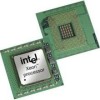4
Datasheet, Volume 1
3.1.3
Intel
®
VT-d Objectives
............................................................................
32
3.1.4
Intel
®
VT-d Features
...............................................................................
32
3.1.5
Intel
®
VT-d Features Not Supported
..........................................................
33
3.2
Intel
®
Trusted Execution Technology (Intel
®
TXT)
.................................................
33
3.3
Intel
®
Hyper-Threading Technology
.....................................................................
34
3.4
Intel
®
Turbo Boost Technology
............................................................................
34
4
Power Management
.................................................................................................
35
4.1
ACPI States Supported
.......................................................................................
35
4.1.1
System States
........................................................................................
35
4.1.2
Processor Core/Package Idle States
...........................................................
35
4.1.3
Integrated Memory Controller States
.........................................................
35
4.1.4
PCI Express* Link States
.........................................................................
36
4.1.5
Interface State Combinations
...................................................................
36
4.2
Processor Core Power Management
......................................................................
36
4.2.1
Enhanced Intel
®
SpeedStep
®
Technology
..................................................
37
4.2.2
Low-Power Idle States
.............................................................................
37
4.2.3
Requesting Low-Power Idle States
............................................................
39
4.2.4
Core C-states
.........................................................................................
39
4.2.4.1
Core C0 State
...........................................................................
40
4.2.4.2
Core C1/C1E State
....................................................................
40
4.2.4.3
Core C3 State
...........................................................................
40
4.2.4.4
Core C6 State
...........................................................................
40
4.2.4.5
C-State Auto-Demotion
..............................................................
40
4.2.5
Package C-States
...................................................................................
41
4.2.5.1
Package C0
..............................................................................
42
4.2.5.2
Package C1/C1E
........................................................................
42
4.2.5.3
Package C3 State
......................................................................
43
4.2.5.4
Package C6 State
......................................................................
43
4.3
IMC Power Management
.....................................................................................
43
4.3.1
Disabling Unused System Memory Outputs
.................................................
43
4.3.2
DRAM Power Management and Initialization
...............................................
44
4.3.2.1
Initialization Role of CKE
............................................................
44
4.3.2.2
Conditional Self-Refresh
.............................................................
44
4.3.2.3
Dynamic Power Down Operation
..................................................
44
4.3.2.4
DRAM I/O Power Management
....................................................
45
4.4
PCI Express* Power Management
........................................................................
45
5
Thermal Management
..............................................................................................
47
6
Signal Description
....................................................................................................
49
6.1
System Memory Interface
...................................................................................
50
6.2
Memory Reference and Compensation
..................................................................
52
6.3
Reset and Miscellaneous Signals
..........................................................................
52
6.4
PCI Express* Based Interface Signals
...................................................................
53
6.5
DMI—Processor to PCH Serial Interface
.................................................................
53
6.6
PLL Signals
.......................................................................................................
54
6.7
Intel
®
Flexible Display Interface Signals
...............................................................
54
6.8
JTAG/ITP Signals
...............................................................................................
55
6.9
Error and Thermal Protection
...............................................................................
56
6.10
Power Sequencing
.............................................................................................
57
6.11
Processor Core Power Signals
..............................................................................
57
6.12
Graphics and Memory Core Power Signals
.............................................................
59
6.13
Ground and NCTF
..............................................................................................
60
6.14
Processor Internal Pull Up/Pull Down
....................................................................
60














